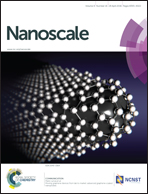Enzyme catalysis enhanced dark-field imaging as a novel immunohistochemical method†
Abstract
Conventional immunohistochemistry is limited to subjective judgment based on human experience and thus it is clinically required to develop a quantitative immunohistochemical detection. 3,3′-Diaminobenzidin (DAB) aggregates, a type of staining product formed by conventional immunohistochemistry, were found to have a special optical property of dark-field imaging for the first time, and the mechanism was explored. On this basis, a novel immunohistochemical method based on dark-field imaging for detecting HER2 overexpressed in breast cancer was established, and the quantitative analysis standard and relevant software for measuring the scattering intensity was developed. In order to achieve a more sensitive detection, the HRP (horseradish peroxidase)-labeled secondary antibodies conjugated gold nanoparticles were constructed as nanoprobes to load more HRP enzymes, resulting in an enhanced DAB deposition as a dark-field label. Simultaneously, gold nanoparticles also act as a synergistically enhanced agent due to their mimicry of enzyme catalysis and dark-field scattering properties.


 Please wait while we load your content...
Please wait while we load your content...